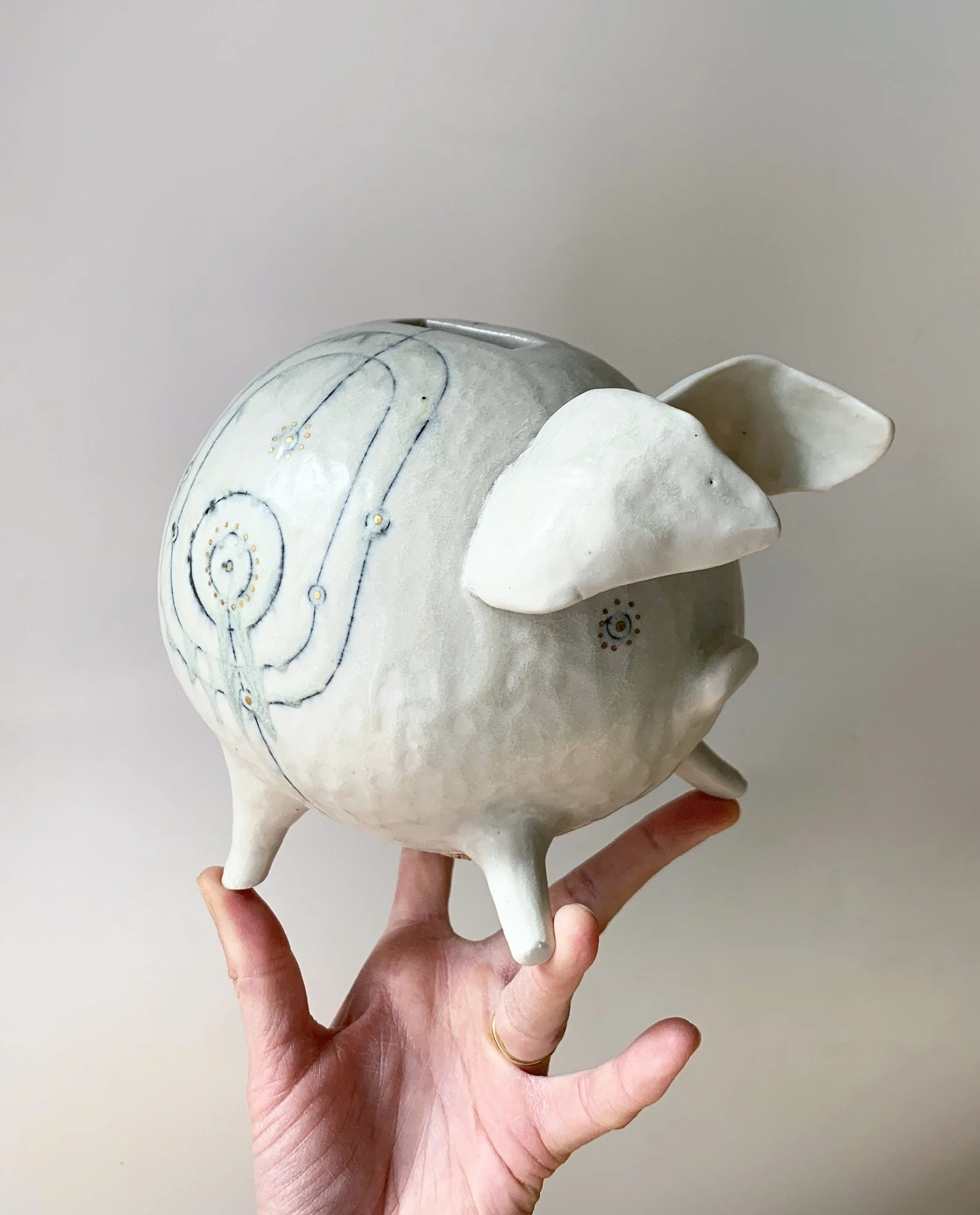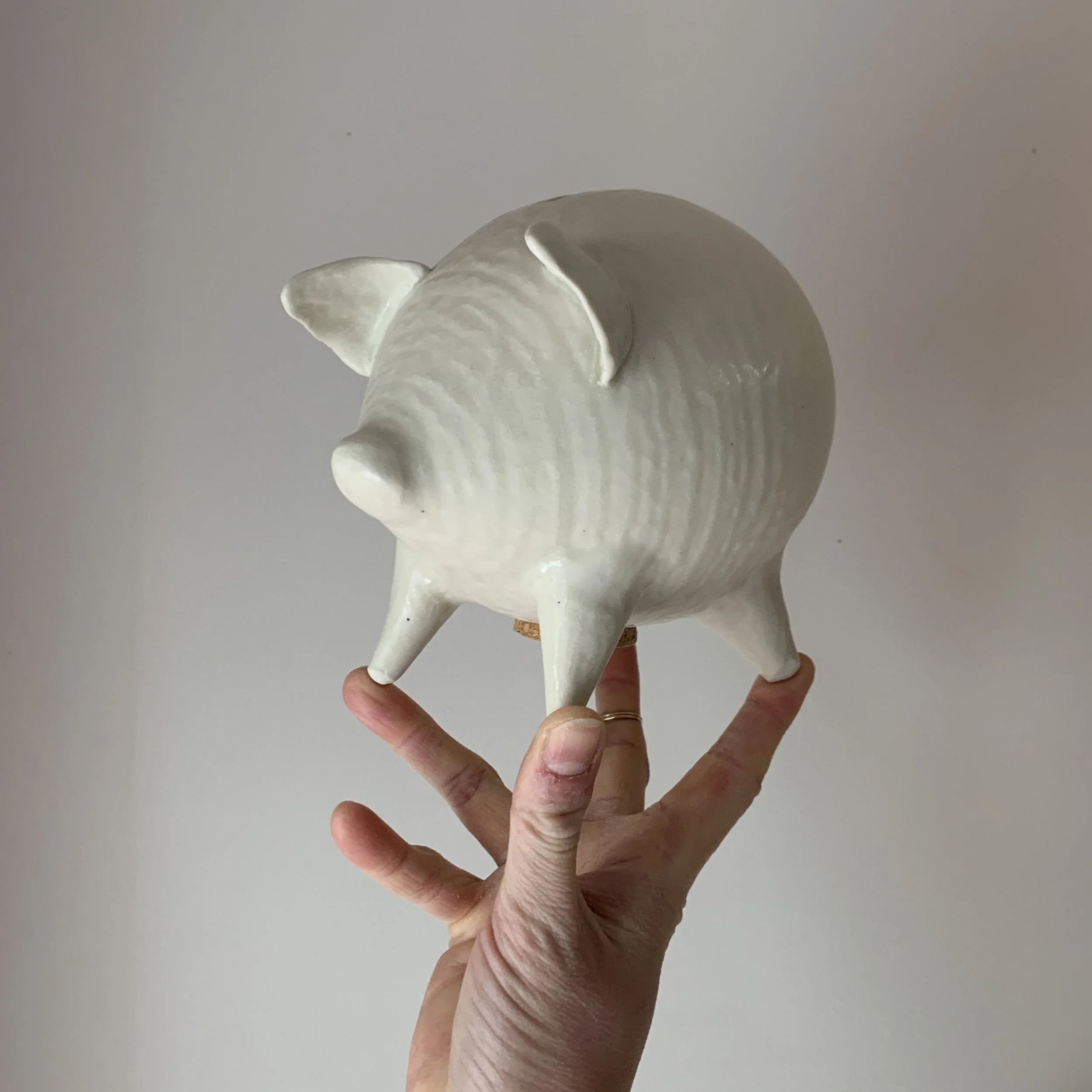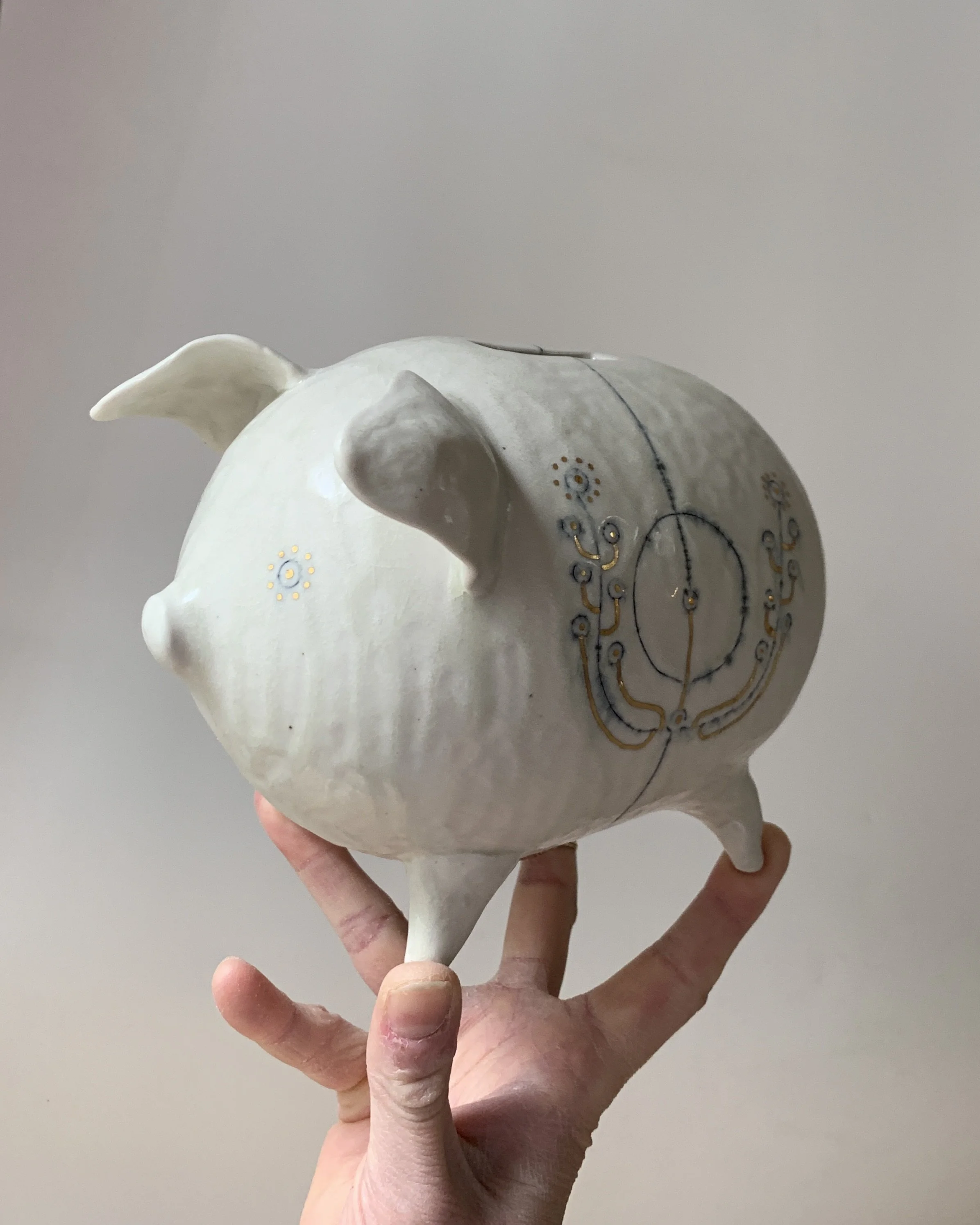Piggy Banks
Did you have a piggy bank when you were growing up? I’m curious, was it actually in the shape of a pig or was it another animal or other shaped vessel? Was it one that you deposited your birthday dollars into or maybe the coins left by the tooth fairy? I had a few piggy banks that I used as a kid, each a “fund” for something but none of my “piggy” banks were in the shape of a pig! I had always wondered why we call it a “piggy” bank when one could easily find a litany of other shapes, animals, etc. to save in!
We did have one actual piggy bank, but we didn’t use it for saving, it was purely decoration, at least that’s what I was told—rattling it also confirmed the absence of coins. It was acquired by my grandfather in Japan and unlike my banks, it didn’t have a cork that enabled you to easily remove your despots. Perhaps this was also a contributing factor to the “décor” use of the bank. There was something about this particular piggy bank that captivated me, its large round belly anticipating many great deposits. It had teeny legs on which it stood and large floppy ears, so much character!
It's this piggy bank that acted as inspiration for the piggy banks that I most recently made.
If you’re curious about the history of ceramic vessels as banks, I recently came across an article in the 2013 Ceramics in America Publication, edited by Rob Hunter. In the article “In Search of Piggy Banks and Christmas Boxes,” authors Ivor Noel Hume and Jacqui Pearce, along with ceramicist Michelle Erickson, trace the history of storing coins in ceramic vessels which have come to be known as “piggy banks”. It’s a fascinating read and one that employs “forensic” ceramics to divulge the secrets of 16th century pots. It doesn’t get much better when combining history, mystery, and inspiration all in one go!
I hope you enjoy these piggy banks as much as I do, and if you have a moment, check out the Ceramics in America article here!



